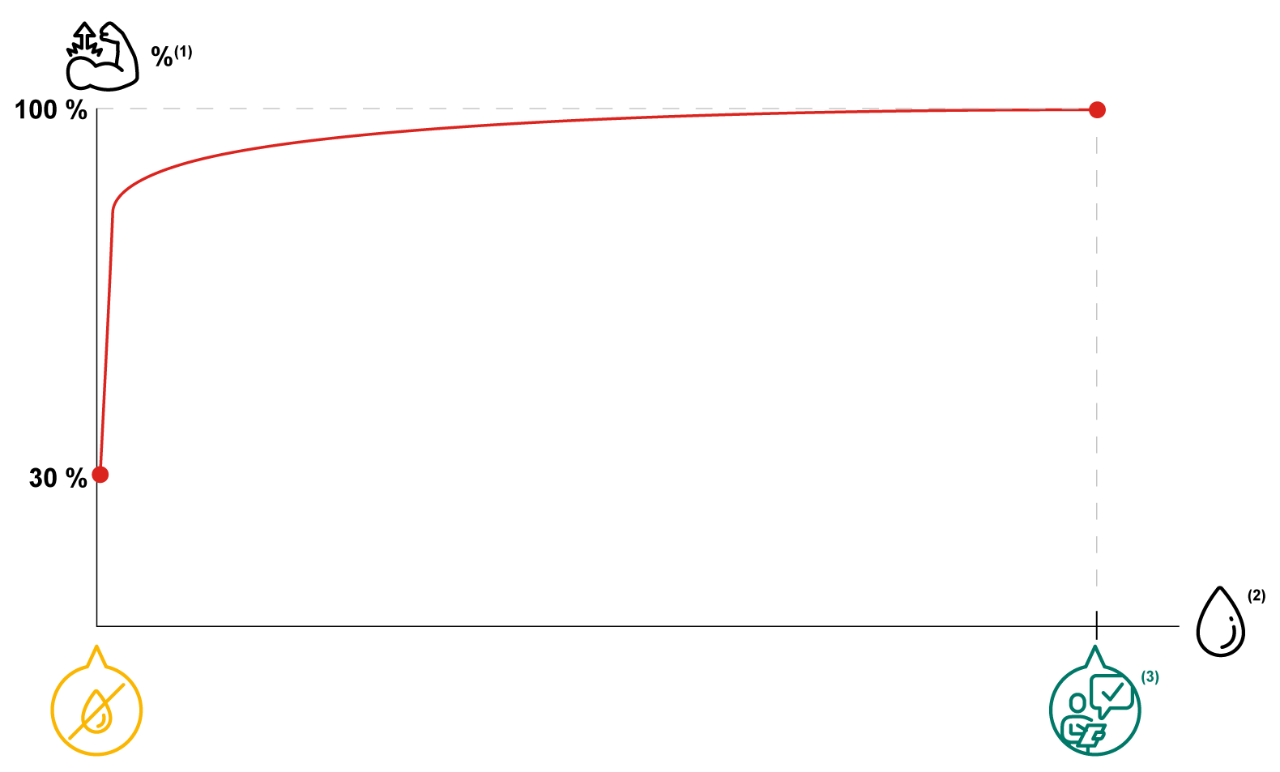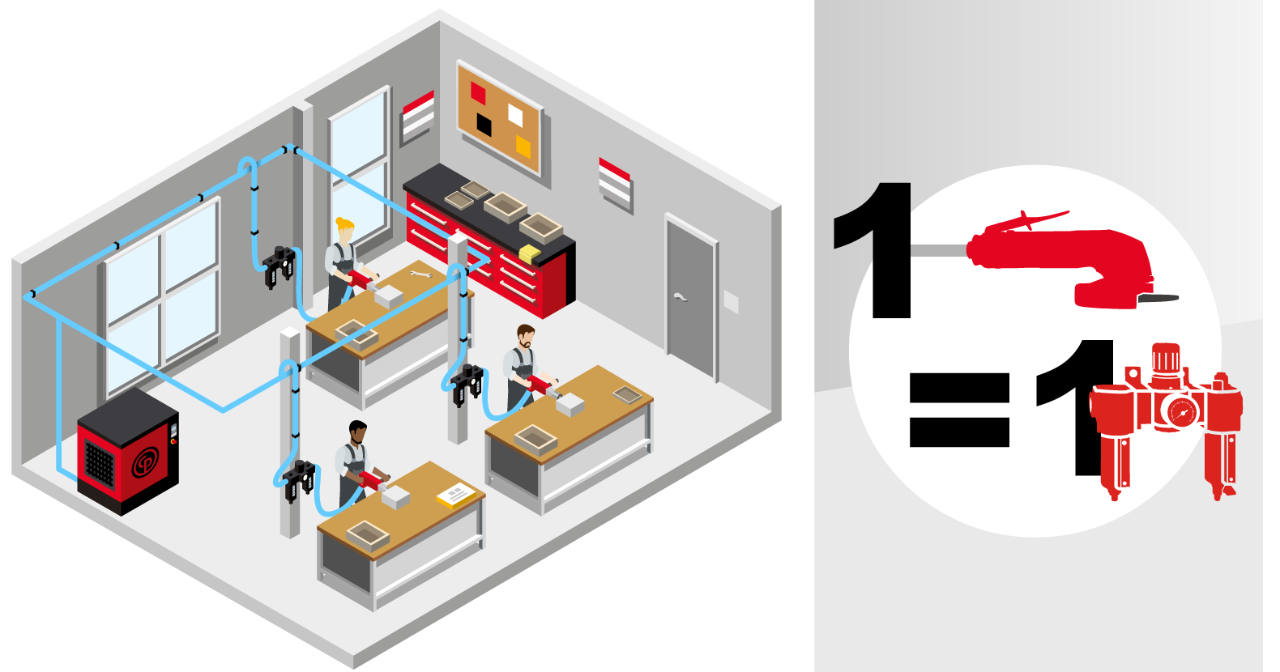Achieve highest pneumatic tool performance by optimizing air line installation
Conditioners (FRL Filters, Regulators and Lubricators) provide high efficiency and durability for pneumatic tools. Incorporating a Conditioner (FRL) into your air system ensures high efficiency and durability for your pneumatic equipment. It ensures that you get a good return on your investment. Adding a Conditioner (FRL) near your pneumatic equipment ensures optimal air quality by reducing the risk of moisture and dust in the air line, as well as the required airflow pressure. The conditioner (FRL) also helps protect your air line and pneumatic equipment by providing lubrication.
Conditioner (FRL) system; It combines 3 main functions: filtering, regulation and lubrication in a single system.
1. Air filtration: The filter cleans the compressed air and retains solid particles (dust, dirt, rust).
In a pneumatic motor, water and dust can block airflow and reduce the power of the tool; This can lead to increased maintenance costs and air consumption. Dirt and rust can also damage the engine, causing loss of power and premature wear. This increases tool repair costs and the risk of problems during production
2. Air regulation: The regulator ensures consistency of dynamic working pressure at 6.3 bar
This is important because if the pressure is lower than recommended by the manufacturer, the tool will not achieve its performance level and profitability will be reduced. If the pressure is too high, the tool will wear out prematurely. Additionally, it may malfunction, causing injury to the operator and damage to the application.
3. Air lubrication: The lubricator adds a controlled amount of oil to the compressed air system
Without lubrication, the handpiece will wear out and no longer reach its maximum performance level. This causes loss of productivity and increased maintenance costs. The graphs below show the durability and lifespan of the tool's air motor with and without lubrication maintenance:
Get optimum performance from your tool's air motor with good lubrication:

Estimated figures based on laboratory tests performed on pneumatic motors.
(1) Engine power output of the tool
(2) Amount of oil
(3) Tool manufacturer recommendations (available in operator/product manual)
Ensure the optimum lifespan of your tool's air motor with good air lubrication:

Estimated figures based on laboratory tests performed on pneumatic motors.
(1) Engine power output of the tool
(2) Amount of oil
(3) Tool manufacturer recommendations (available in operator/product manual)
4 points to consider when choosing the appropriate Conditioner (FRL) unit
Since there are many different types of Conditioner (FRL), there are 4 important points to consider when specifying a Conditioner (FRL):
- Environment
- FRL type
- Slot size
- Tool airflow requirements
Setting up FRLs

Many pneumatic tool users do not get the best performance from their tools due to air line installation. To maximize the benefits of using conditioners (FRL), there are 4 rules you should keep in mind:
- For best performance, always use one Conditioner (FRL) unit per tool. If more than one tool is connected to the same Conditioner (FRL) unit, air pressure and lubrication will be diluted between different air tools and you will not benefit from the regulator function.
- Install Conditioner (FRL) units as close to the tool as possible with minimum hose length to ensure oil reaches the tool and to prevent loss of pressure.
- Lubrication maximizes the life of your tool so always be sure to fill the lubricator with oil before using the tool.
- Make sure to maintain the inlet filters regularly: They should be free of moisture and dirt.
Safety Tips
Pneumatic tools are designed to operate at 6.3 bar dynamic air pressure and with lubrication. Higher pressure may affect tool life and operator safety (excessive vibration or corrosive overspeed and risk of explosion). We recommend using an FRL with a gauge to adjust the pressure with each tool.
- Four key factors to ensure optimum performance of your pneumatic tool
- Why is tool calibration important?
- Pneumatic torque adjustable impact driver nuts and bolts: Preventing overtightening
- Maintenance of air line and hammer mechanism
- Safety precautions during metal processing
- Preventing objects from falling when working at height
- The secret to efficient industrial drilling operations
- Which tool is best for you? Pneumatic or Electric?
- Why does the pneumatic grinder motor rotate very slowly?
- ATEX, NEC, DSEAR… what is it and how can it help you?


